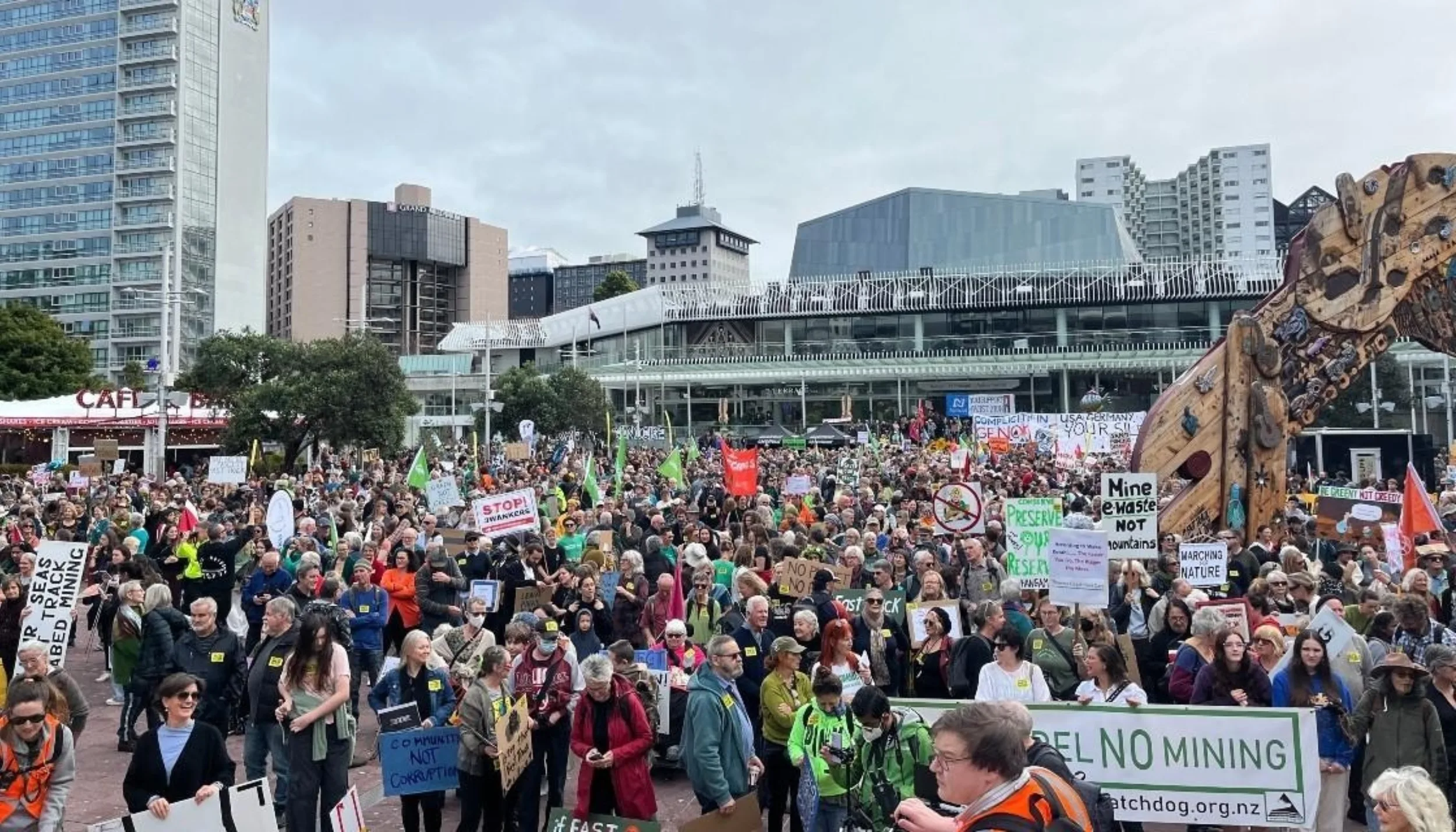A Place For People: A Brief History of Aotea Square, the Heartbeat of Aotea Arts Quarter

Aotea Square, the epicentre of Aotea Arts Quarter, has evolved into one of Tāmaki Makaurau's most significant civic spaces since its inception. As a focal point for community gatherings, cultural events, and social interactions, Aotea Square has a rich history that reflects the dynamic spirit of Auckland itself.
Origins and Development
Aotea Square, originally the site of city markets and surrounded by Chinatown and low-rise commercial buildings, was selected for the Auckland Town Hall in 1908. The completion of the Town Hall spurred plans for a civic centre, establishing the wider Aotea Precinct as the heart of Auckland City. This area encompasses key civic and entertainment venues, including the Civic Theatre (1929) and the Aotea Centre (1990).
The square itself was created in 1979, incorporating a portion of the former Grey's Avenue, which previously connected directly to Queen Street. In November 2010, Aotea Square underwent a major redevelopment, redesigning Aotea Square to accommodate crowds of up to 20,000 people. The name "Aotea," meaning "white cloud" in Māori, honors the cultural heritage of the region and symbolizes its connection to the land and its people.
A Space for Community
From the very beginning, Aotea Square was envisioned as a meeting place for Aucklanders. Over the years, it has played host to numerous open-air concerts, markets, festivals and political rallies, and public demonstrations.
Events like the Auckland Lantern Festival, the annual Pasifika Festival, Auckland Arts Festival, and most recently, Diwali, have turned the square into a vibrant hub where diverse cultures converge, showcasing the city's multicultural identity.
Architectural and Cultural Significance
The square has undergone various redesigns and renovation to enhance its functionality and aesthetic appeal.
In the early 2000s, significant landscaping and design upgrades were made to create a more inviting civic atmosphere. Seating areas, fountains, and green spaces transformed Aotea Square into a more pedestrian-friendly environment - encouraging people to stay, socialise, and participate in activities.
The square also serves as a backdrop for art installations and performances, and is home to several notable artworks that reflect both Māori culture and the diverse influences shaping Aotearoa's artistic landscape.
Most notable is the Waharoa (Gateway) by Māori sculptor Selwyn Muru, which sits at the Queen Street entrance, combining traditional and modern elements, featuring symbols like birds, fish, and the crescent moon alongside the nuclear disarmament symbol.
In front of the Town Hall, a bronze statue of Sir Dove-Myer Robinson, sculpted by Toby Twiss in 2003, honors a former mayor of Auckland.
The Mountain Fountain, created by Terry Stringer in 1979, served as the centerpiece of the square, echoing the Aotea Centre's roofline. Although it faced potential removal in 2009, the fountain was ultimately relocated to the Holy Trinity Cathedral in Parnell with the artist's consent.
A 19th-century bronze statue of George Eden, Lord Auckland, originally erected in Calcutta, was brought to the square in the 1960s.
Together, these artworks contribute to Aotea Square’s identity as a bastion of public art, civic space and a cultural hub in Auckland.
A Place for the People
Over the years Aotea Square has continued to adapt to the evolving needs of the people of Auckland.
It has become a crucial site for social movements and civic engagement, hosting rallies and public discussions that reflect the pressing issues of the day.
Aotea Square has hosted some of the countries most significant social movements and political demonstrations, including the infamous DD Smash riot in 1984, the Occupy Movement which saw protesters take up camp in the square for 3 months, to more recent newscycle issues such as the March for Nature and the Fast Track Approvals Bill.
In addition to its role as a cultural and civic space, Aotea Square stands as a testament to Auckland’s vow to preserve and foster community and connection even in the depths of urban density. Its evolution from a simple public space to a vibrant cultural hub underscores its importance as a meeting place for people from all walks of life. As Auckland city and the Midtown area continues to grow and change, Te Waihorotiu Station opens and The Symphony Centre development starts to take shape, Aotea Square remains a central gathering point and urban juncture that is designed as a place for people.


